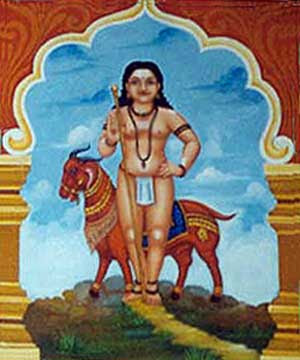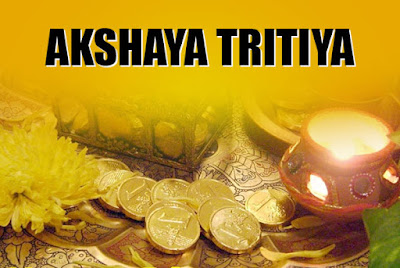Chengannur Bhagawathy Temple
This temple is located Chengannur, a village situated 40 km away from the town of Kottayam in Kerala. Lord Maha Deva is consecrated facing east and the Goddess Bhagawathy is facing west in this temple. What is very unique about this temple is that the people believe that the Goddess has periods once in a while at this temple. There is also a temple of Vishnu in Chengannur. Nammazhawar has visited this temple and sung about Lord Vishnu there. People believe that Yudhishtra built the first temple of Lord Vishnu to get rid of his sin of telling a lie in the battle field.
Outside the main temple of Shiva and Bhagawathy, there are temples for Sastha, Neelagreeva (blue necked Lord Shiva) and Sthaleesa.
People believe that in the southern part of the temple, several great Manthra books used to get rid of poison are buried. If the devotee stands on the rock cover and sees the tip of the Sree Kovil, for the entire day, people believe that he would not be affected by poison. There is also a belief that if someone puts his hand in the hole in the western wall and takes a false oath, he would be bitten by a divine snake. According to folklore, a local boy of the poison doctor family was challenged by a great Azhwar. That night the boy started crying and prayed to the Goddess. She told him that in a pipe in her granary, there was a snake. The boy took out the pipe and challenged the Azhwar to make the snake come out of the pipe. Although the Azhwar tried his best, he could not make the snake come out. The boy then commanded the snake to come out. The snake in the pipe came out and started chasing the Azhwar. He pleaded with the boy to control the snake. The boy then requested the snake to go back to the pipe, and put the pipe out through the hole in the western wall. People believe that this divine snake is still there and would bite anyone who takes a false oath.
There are several stories about this temple:
One belief is that when Lord Shiva cut the body of his consort Sathi Devi into pieces and threw them all over India, the middle part of her body fell in the place where this temple is located. Because of this, they believe that the Goddess in this temple has monthly periods. People also believe that because of this, the Shiva Linga in this temple is consecrated on a triangular pedestal.
There is also a belief that the Goddess consecrated here is not Parvathy, but instead is Kannagi, the Tamil heroine who burnt the city of Madurai for avenging the injustice done to her husband. It seems she crossed over to Kerala and stood below a Vengai tree. A huntress saw her and made her statue in mud. Later Cheran Chenguttuvan made an exactly similar statue and consecrated it here.
According to another story, when Shiva married to Goddess Parvathi, the entire world went to attend the marriage, and as a result, the earth became unstable. Lord Shiva then sent Sage Agasthya to go to the south. The sage made Lord Shiva promise that he would once again celebrate the marriage for the sage in the south. When Lord Shiva came along with Goddess Parvathi to Chengannur, she came of age. The devas celebrated this event at Chengannur. Later however, this place was completely forgotten. This place was called Sonadhri (Red Mountain) and sage Parasurama established an Agraharam here. At that time, one tribal woman sharpened her sword on a stone and blood started oozing from the stone. The Brahmins were called and they found that this was a statue of Lord Shiva. So they decided to build a temple. The astrologers also found the presence of the Goddess there. So they decided to build a temple for the Goddess also. At that time, the famous Perunthachan visited the temple. The people there requested him to make a statute of the Goddess. Instead, he showed them a spot in the northwest of the temple and asked them to start digging there. When they did, the present-day statue was recovered from there. Then they consecrated both the gods after performing Kumbhabhishekam.
Once, when the mesanthi (the chief priest) opened the temple of the Goddess in the morning to change the flowers, he was astounded to find that the cloth which the Goddess was wearing had a stain. This cloth was shown to the ladies of Vanchi Puzhathu Madam as well as the land lady of the house of Thazhaman pothy. Both of them confirmed that Goddess was undergoing periods.
Thazhaman pothy advised the Mesanthi to remove the statue to a separate temple and close the door. The pooja for the next three days was performed in the northeastern corner of the temple. He also asked his wife and the chief lady of Vanchi Puzhathu Madam to keep the Goddess company during the night. For several generations the ladies of these houses keep company to the Goddess during the time of her periods. After this incident, this started occurring regularly every month for some time. Nowadays however, it happens three to four times a year. The cloth which the goddess wears during this time (Thiru poothu) is considered to be a prized possession, and is worshipped in many homes.
On the fourth day after the periods start, the goddess is taken on a female elephant for her ritual bath, accompanied with musical instruments to the nearby Mithra River. The namboodiri women give the Goddess an oil bath and bring her back. The statue of the Goddess is secretly taken out, mounted on the top of the elephant, and the temple is closed. Ladies raise Mangala Dwani with their throat (called Kuruvai). The elephant on which the goddess rides is received with Nira Para. After the ritual bath given by the ladies, the priest does ceremonies like Oil Abhishekam, Milk Abhishekam etc and after worshipping her, the goddess is brought back to the temple.
There is yet another story which is also popular. According to this story, after the consecration of the Goddess, Perunthachan once again came to the temple along with a Pancha loha idol of the Goddess. He predicted that the temple will catch fire and then the Devi idol will be destroyed. He said at that time that this new Pancha loha idol should be consecrated.
The prediction came true. During the fire, the Shiva Linga was saved by coating it with mud, but the idol of the goddess could not be saved. When they were searching for a suitable replacement idol, Neelakandan of Thazaman Pothi’s house was told about this story in a dream. He was also told that the idol brought by Perumthachan was preserved below a stone in the river.
Although they tried several times to find the idol, they were unsuccessful. At that time, some fishermen from Karunagapally came to this place and they were able to find the idol. They brought the idol to the temple and handed it over the temple priest. That day coincided with the festival of Shiva Rathri. Even now, on every Shiva Rathri festival, the fisher folk of Karunagapally are honoured at the temple.
This temple was under the control of Travancore kings. Once, a British resident called Munro laughed at the belief of the periods to the Goddess and stopped all grants for observing it. From then onwards, his wife started to bleed without stopping. Though he consulted with several doctors, the bleeding continued without stopping. One wellwisher of Munro told him that it may be due to his action in stopping the grants to Chengannur temple. Then Munro said that if his wife is cured, he will create a trust whose interest would be sufficient to observe the celebration of the Thirupoothu (periods) of the Goddess. His wife was then soon cured. Apart from a creating the trust, Munro also presented two golden bangles to the Goddess.
The temple opens everyday at 3.30 am and remains open 11.30 am. Several functions are held each day during this time. Then it again opens at 5 pm and remains open up to 8 pm. The major festival of the temple is in the month of Dhanu (December-January), and the Arattu (ritual dip in the river) is on Thiruvadira day.
By P.R.Ramachander

















